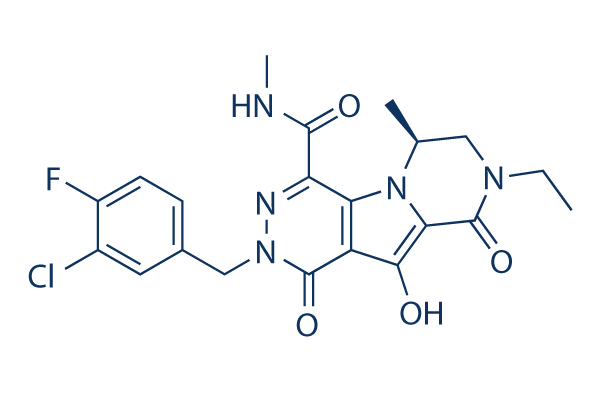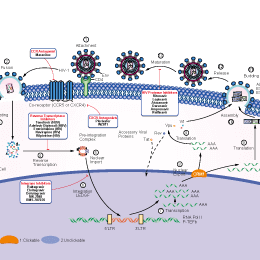
- Bioactive Compounds
- By Signaling Pathways
- PI3K/Akt/mTOR
- Epigenetics
- Methylation
- Immunology & Inflammation
- Protein Tyrosine Kinase
- Angiogenesis
- Apoptosis
- Autophagy
- ER stress & UPR
- JAK/STAT
- MAPK
- Cytoskeletal Signaling
- Cell Cycle
- TGF-beta/Smad
- DNA Damage/DNA Repair
- Compound Libraries
- Popular Compound Libraries
- Customize Library
- Clinical and FDA-approved Related
- Bioactive Compound Libraries
- Inhibitor Related
- Natural Product Related
- Metabolism Related
- Cell Death Related
- By Signaling Pathway
- By Disease
- Anti-infection and Antiviral Related
- Neuronal and Immunology Related
- Fragment and Covalent Related
- FDA-approved Drug Library
- FDA-approved & Passed Phase I Drug Library
- Preclinical/Clinical Compound Library
- Bioactive Compound Library-I
- Bioactive Compound Library-Ⅱ
- Kinase Inhibitor Library
- Express-Pick Library
- Natural Product Library
- Human Endogenous Metabolite Compound Library
- Alkaloid Compound LibraryNew
- Angiogenesis Related compound Library
- Anti-Aging Compound Library
- Anti-alzheimer Disease Compound Library
- Antibiotics compound Library
- Anti-cancer Compound Library
- Anti-cancer Compound Library-Ⅱ
- Anti-cancer Metabolism Compound Library
- Anti-Cardiovascular Disease Compound Library
- Anti-diabetic Compound Library
- Anti-infection Compound Library
- Antioxidant Compound Library
- Anti-parasitic Compound Library
- Antiviral Compound Library
- Apoptosis Compound Library
- Autophagy Compound Library
- Calcium Channel Blocker LibraryNew
- Cambridge Cancer Compound Library
- Carbohydrate Metabolism Compound LibraryNew
- Cell Cycle compound library
- CNS-Penetrant Compound Library
- Covalent Inhibitor Library
- Cytokine Inhibitor LibraryNew
- Cytoskeletal Signaling Pathway Compound Library
- DNA Damage/DNA Repair compound Library
- Drug-like Compound Library
- Endoplasmic Reticulum Stress Compound Library
- Epigenetics Compound Library
- Exosome Secretion Related Compound LibraryNew
- FDA-approved Anticancer Drug LibraryNew
- Ferroptosis Compound Library
- Flavonoid Compound Library
- Fragment Library
- Glutamine Metabolism Compound Library
- Glycolysis Compound Library
- GPCR Compound Library
- Gut Microbial Metabolite Library
- HIF-1 Signaling Pathway Compound Library
- Highly Selective Inhibitor Library
- Histone modification compound library
- HTS Library for Drug Discovery
- Human Hormone Related Compound LibraryNew
- Human Transcription Factor Compound LibraryNew
- Immunology/Inflammation Compound Library
- Inhibitor Library
- Ion Channel Ligand Library
- JAK/STAT compound library
- Lipid Metabolism Compound LibraryNew
- Macrocyclic Compound Library
- MAPK Inhibitor Library
- Medicine Food Homology Compound Library
- Metabolism Compound Library
- Methylation Compound Library
- Mouse Metabolite Compound LibraryNew
- Natural Organic Compound Library
- Neuronal Signaling Compound Library
- NF-κB Signaling Compound Library
- Nucleoside Analogue Library
- Obesity Compound Library
- Oxidative Stress Compound LibraryNew
- Plant Extract Library
- Phenotypic Screening Library
- PI3K/Akt Inhibitor Library
- Protease Inhibitor Library
- Protein-protein Interaction Inhibitor Library
- Pyroptosis Compound Library
- Small Molecule Immuno-Oncology Compound Library
- Mitochondria-Targeted Compound LibraryNew
- Stem Cell Differentiation Compound LibraryNew
- Stem Cell Signaling Compound Library
- Natural Phenol Compound LibraryNew
- Natural Terpenoid Compound LibraryNew
- TGF-beta/Smad compound library
- Traditional Chinese Medicine Library
- Tyrosine Kinase Inhibitor Library
- Ubiquitination Compound Library
-
Cherry Picking
You can personalize your library with chemicals from within Selleck's inventory. Build the right library for your research endeavors by choosing from compounds in all of our available libraries.
Please contact us at [email protected] to customize your library.
You could select:
- Antibodies
- Bioreagents
- qPCR
- 2x SYBR Green qPCR Master Mix
- 2x SYBR Green qPCR Master Mix(Low ROX)
- 2x SYBR Green qPCR Master Mix(High ROX)
- Protein Assay
- Protein A/G Magnetic Beads for IP
- Anti-Flag magnetic beads
- Anti-Flag Affinity Gel
- Anti-Myc magnetic beads
- Anti-HA magnetic beads
- Magnetic Separator
- Poly DYKDDDDK Tag Peptide lyophilized powder
- Protease Inhibitor Cocktail
- Protease Inhibitor Cocktail (EDTA-Free, 100X in DMSO)
- Phosphatase Inhibitor Cocktail (2 Tubes, 100X)
- Cell Biology
- Cell Counting Kit-8 (CCK-8)
- Animal Experiment
- Mouse Direct PCR Kit (For Genotyping)
- New Products
- Contact Us
MK-2048
MK-2048 is a potent inhibitor of integrase (IN) and INR263K with IC50 of 2.6 nM and 1.5 nM, respectively.

MK-2048 Chemical Structure
CAS No. 869901-69-9
Purity & Quality Control
MK-2048 Related Products
| Related Targets | HIV-1 Integrase HIV-2 Integrase HIV Integrase | Click to Expand |
|---|---|---|
| Related Products | BMS-707035 | Click to Expand |
| Related Compound Libraries | Anti-infection Compound Library Antibiotics compound Library Antiviral Compound Library Anti-parasitic Compound Library Gut Microbial Metabolite Library | Click to Expand |
Signaling Pathway
Biological Activity
| Description | MK-2048 is a potent inhibitor of integrase (IN) and INR263K with IC50 of 2.6 nM and 1.5 nM, respectively. | ||||
|---|---|---|---|---|---|
| Targets |
|
| In vitro | ||||
| In vitro | MK-2048 inhibits subtype B and subtype C integrase activities with IC50 of 75 nM and 80 nM, respectively. Disintegration is prevented by high concentrations of MK-2048 to a comparable extent with both subtype B and C enzymes. Mutation at the site of R263K slightly increases integrase susceptibility to MK-2048. G118R translates into a decrease in integrase activity and confers resistance to MK-2048. [2] MK-2048 inhibits S217H intasome with an IC50 of 900 nM. By contrast, MK2048 remains fully active against the N224H intasome with an IC50 of 25 nM. MK2048 displays substantially lower dissociation rates compared with raltegravir, another integrase inhibitor. [3] The subsequent selection of E138K partially restores replication capacity to approximately 13% of wt levels and increased resistance to MK-2048 to approximately 8-fold. MK-2048 is active against viruses resistant to RAL and EVG. Exposure to MK-2048 leads to the selection of G118R as a possible novel resistance mutation after 19 weeks. Continued pressure with MK-2048 subsequently leads to an additional substitution after 29 weeks at position E138K, within the IN gene. Although the G118R mutation alone confers only slight resistance to MK-2048 but not to RAL or EVG, its presence arouses a dramatic reduction in viral replication capacity compared to wild-type NL4-3. E138K both partially restores viral replication capacity and also contributes to increased levels of resistance against MK-2048. [4] | |||
|---|---|---|---|---|
| Cell Research | Cell lines | PM1 cells | ||
| Concentrations | 0.0256 nM to 2 μM | |||
| Incubation Time | 72 hours | |||
| Method | A total of 7.5×104 PM1 cells per well are infected with clonal NL4-3 virus containing the integrase mutations G118R, E138K, or G118R and E138K or with wild-type viruses (45 ng p24 virus per well) by spinoculation at 1,200 × g for 2 hours at 37 °C. Cells are washed twice to remove unbound virus and then resuspends in RPMI growth medium alone or containing various concentrations of MK-2048, ranging between 0.0256 nM and 2 μM. Experiments is performed, each in duplicate. Supernatant reverse transcriptase (RT) activity is measured at 72 hours postinfection as an indicator of virus replication. Data are normalized based on uninfected and no-drug controls included in each experiment. Viral replication capacity is determined in PM1 cells using the same methodology as that used to determine EC50s, by comparing levels of supernatant RT activity of each mutant virus to those of wild-type virus in the absence of MK-2048. | |||
Chemical Information & Solubility
| Molecular Weight | 461.87 | Formula | C21H21ClFN5O4 |
| CAS No. | 869901-69-9 | SDF | Download MK-2048 SDF |
| Smiles | CCN1CC(N2C3=C(C(=C2C1=O)O)C(=O)N(N=C3C(=O)NC)CC4=CC(=C(C=C4)F)Cl)C | ||
| Storage (From the date of receipt) | |||
|
In vitro |
DMSO : 9 mg/mL ( (19.48 mM) Moisture-absorbing DMSO reduces solubility. Please use fresh DMSO.) Water : Insoluble Ethanol : Insoluble |
Molecular Weight Calculator |
|
In vivo Add solvents to the product individually and in order. |
In vivo Formulation Calculator |
||||
Preparing Stock Solutions
Molarity Calculator
In vivo Formulation Calculator (Clear solution)
Step 1: Enter information below (Recommended: An additional animal making an allowance for loss during the experiment)
mg/kg
g
μL
Step 2: Enter the in vivo formulation (This is only the calculator, not formulation. Please contact us first if there is no in vivo formulation at the solubility Section.)
% DMSO
%
% Tween 80
% ddH2O
%DMSO
%
Calculation results:
Working concentration: mg/ml;
Method for preparing DMSO master liquid: mg drug pre-dissolved in μL DMSO ( Master liquid concentration mg/mL, Please contact us first if the concentration exceeds the DMSO solubility of the batch of drug. )
Method for preparing in vivo formulation: Take μL DMSO master liquid, next addμL PEG300, mix and clarify, next addμL Tween 80, mix and clarify, next add μL ddH2O, mix and clarify.
Method for preparing in vivo formulation: Take μL DMSO master liquid, next add μL Corn oil, mix and clarify.
Note: 1. Please make sure the liquid is clear before adding the next solvent.
2. Be sure to add the solvent(s) in order. You must ensure that the solution obtained, in the previous addition, is a clear solution before proceeding to add the next solvent. Physical methods such
as vortex, ultrasound or hot water bath can be used to aid dissolving.
Tech Support
Answers to questions you may have can be found in the inhibitor handling instructions. Topics include how to prepare stock solutions, how to store inhibitors, and issues that need special attention for cell-based assays and animal experiments.
Tel: +1-832-582-8158 Ext:3
If you have any other enquiries, please leave a message.
* Indicates a Required Field
Tags: buy MK-2048 | MK-2048 supplier | purchase MK-2048 | MK-2048 cost | MK-2048 manufacturer | order MK-2048 | MK-2048 distributor







































